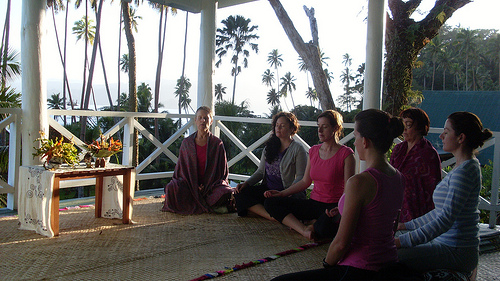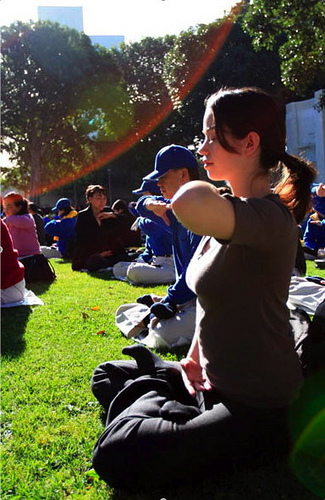The techniques and understandings of Vipassana are taught during a ten day residential retreat. During this time the student not speak, accept to the teachers and facilitators of the retreat. As you will see below attending a Vipassana retreat is crucial to developing a proper understanding of this meditative method and to be able to use in your life.
However in order to give you a sense of the kinds of meditation you will perform during the retreat a short guide on the method has been provided below. This should not be viewed as a replacement for attending an actual retreat.
The Purpose of the Vipassani Retreat

How to do Vipassana Meditation: Retreat
It takes a student ten days to sharpen their mind and to become competent in the Vipassana technique. At the end of their time at the retreat they will be able to meet any emotional challenges they may experience going forward. They will also gain a complete understanding of the theory behind the technique and how to utilize it your life.
Through the ten day process the student goes deeper and deeper into their mind. Things like anger, jealously, an inability to be present or any misaligned vibration will begin to correct itself with the process. This is a gradual process of realignment, which is one reason why the process takes a full ten days.
Vipassani: The Code of Discipline
When you attend a Vipassani retreat you are required to abide by what is known as the Code of Discipline. At the foundation of this code is Sila which means moral conduct. This provides the basis for Samadhi which is concentrating the mind. It also allows for Panna which provides us with the wisdom of insight.
This code has five principles that the adherent is required to obey. These five principles include:
1. No killing any other being
2. No stealing
3. No sexual activity
4. No telling lies
5. No taking intoxicants
Complying with the Teachers Instructions
Throughout the ten day retreat the student is required to comply completely with the teacher’s instructions and the techniques that are taught. The student should follow the techniques exactly as prescribed, neither removing and elements or adding any. It is important that the student trusts the teacher to guide them in a way which in the end will help them. If the student does not place complete trust in the teacher they will not find success with the Vipassana retreat.
Refraining from any other spiritual practices
Another important rule when attending the Vipassana retreat is that the student stops any other spiritual practices. That means other forms of prayer, chanting, dance or meditation must stop during this ten day period. This is not to say that the student needs to give up on these practices long term. Only that it is important to practice Vipassana in its purest form. The mixing of techniques, even with other meditative practices, can delay the student’s progress.
The cost of the retreat
A Vipassana retreat should be provided for free by the instructors. At the end of the retreat you may wish to make a donation which is based on your own ability to give. This is to provide another student with the same experience you have enjoyed. You should give the donation as a gift to others. If you think of the donation as a fee for your own stay then it is better not to give at all.
How to Perform Vipassana Meditation
Step One: Sit in comfortable position. You can choose to close your eyes or keep them open. Lengthen the spine and the neck. Then tuck the neck down towards the chest.

How to do Vipassana Meditation:Sitting
Step Two: Simply notice your experiences as each moment passes. When you are aware that you are thinking a certain train of thought, acknowledge that this is taking place and then let thought go. Your thoughts might come as images as well. As these images appear acknowledge them and then let them go.
Step Three: Wait and see what comes up next and treat it in the same way. Don’t actively try to bring thoughts up. Don’t try and make sense of thoughts. Observe them and wait to see what comes up next. With practice you will cultivate an open mind which does not judge your thoughts. Such as this is good or bad or I wish this was not true.
Step Four: If you find that you are distracted revert to breath centered meditation until you feel centered again. If you are unsure of how to release a thought or image, take a deep breath in and then let it go. Picture the thought or image leaving your body with the breath.
Step Five: In your own time and at your own pace draw your attention back to your body and your breath. Observe the way that you are feeling at this time. When you are ready, open your eyes and take in your surroundings.
Vipassana Meditation is truly a wonderful practice, in stilling the mind true insights arrive. You can stop the self talk just meditate – self help robot.